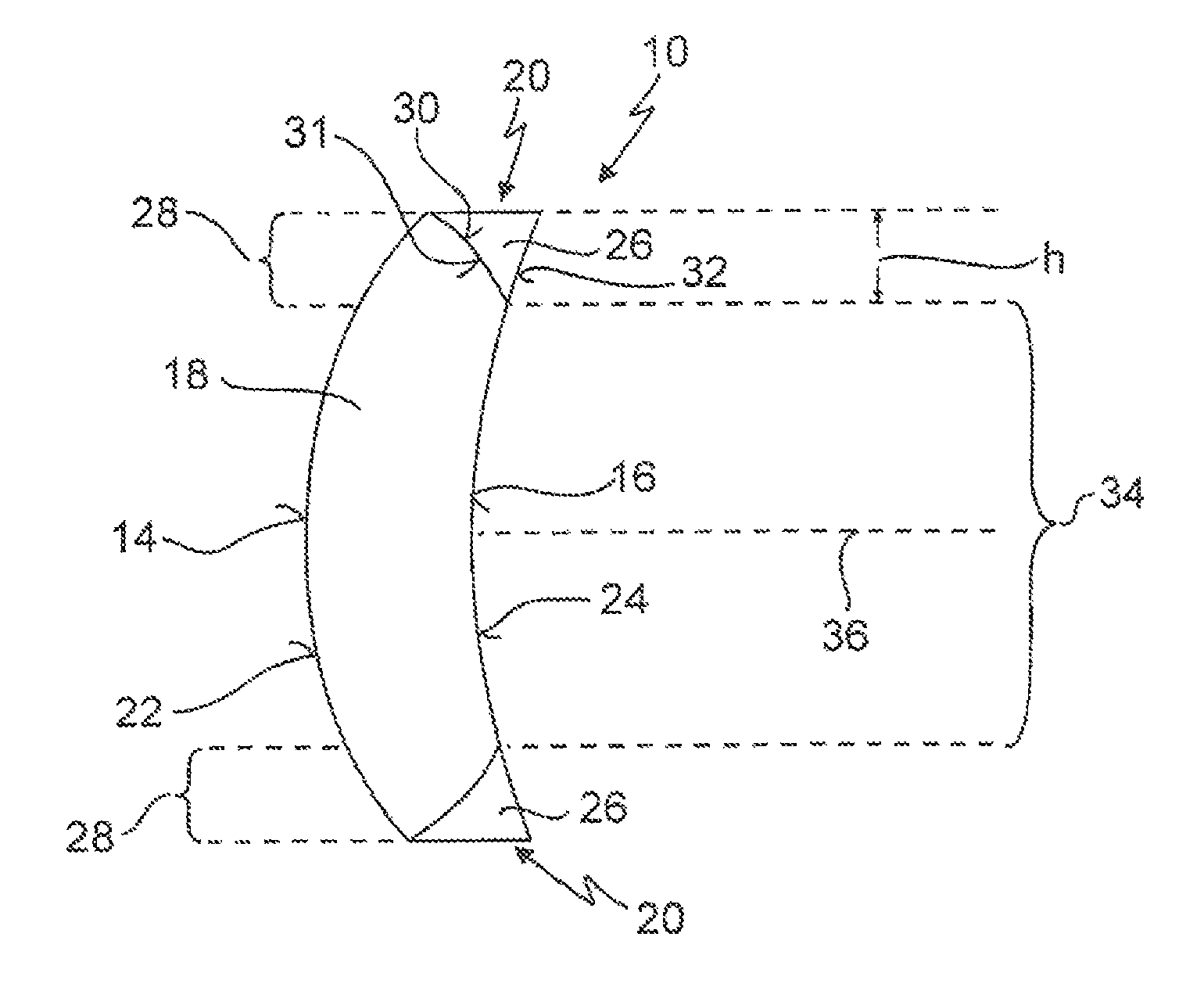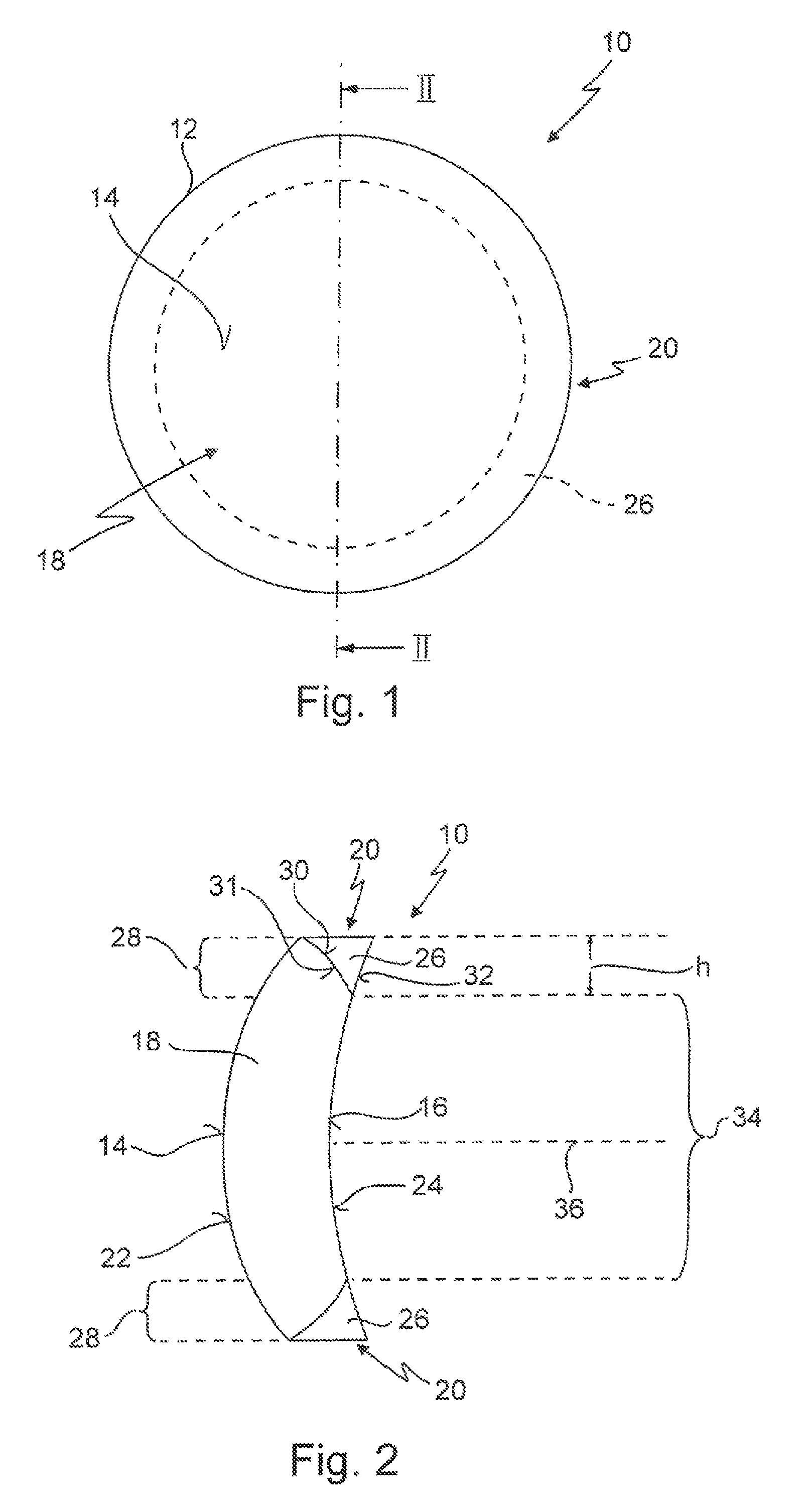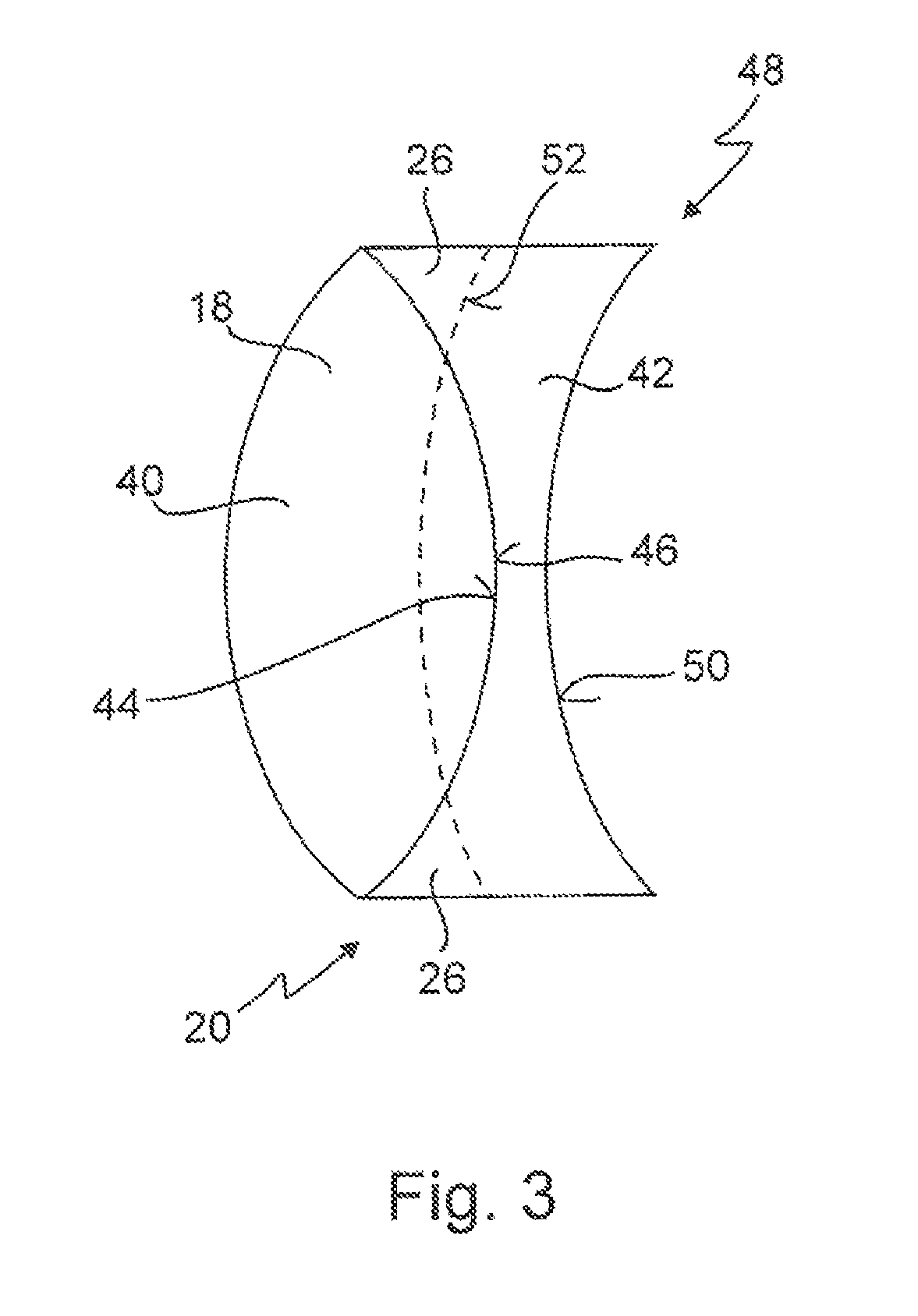Optical lens, in particular for use as a spectacle lens
a technology of optical lenses and achromats, which is applied in the field of optical lenses, can solve the problems of excessive weight, chromatic aberration of spectacle lenses, and inconvenient use of above-described conventional achromats for use as spectacle lenses, and achieve the effect of smallest possible thickness and lowest possible weigh
- Summary
- Abstract
- Description
- Claims
- Application Information
AI Technical Summary
Benefits of technology
Problems solved by technology
Method used
Image
Examples
Embodiment Construction
[0045]FIGS. 1 and 2 illustrate an optical lens, labelled with the general reference sign 10, which is destined for use as a spectacle lens.
[0046]As per FIG. 1, the lens 10 is illustrated as a lens with a circular margin 12. However, it is understood that the present invention is not restricted to circular optical lenses; rather, the lens 10 can have any other, for example polygonal, in particular rectangular, oval or other, basic shape.
[0047]The lens 10 has a front side 14 and a rear side 16. The rear side 16 is that side of the lens 10 that faces the eye of the wearer of the spectacles when the lens 10 is used as a spectacle lens. The curvatures of the front side 14 and rear side 16, and the (central) thickness of the lens 10, illustrated in FIG. 2, should be understood to be exemplary.
[0048]The lens 10 has a first lens element 18 and a second lens element 20.
[0049]In the shown exemplary embodiment, the first lens element 18 has a front surface 22 and a rear surface 24. In the show...
PUM
| Property | Measurement | Unit |
|---|---|---|
| refractive index | aaaaa | aaaaa |
| Abbe number | aaaaa | aaaaa |
| Abbe number | aaaaa | aaaaa |
Abstract
Description
Claims
Application Information
 Login to View More
Login to View More - R&D
- Intellectual Property
- Life Sciences
- Materials
- Tech Scout
- Unparalleled Data Quality
- Higher Quality Content
- 60% Fewer Hallucinations
Browse by: Latest US Patents, China's latest patents, Technical Efficacy Thesaurus, Application Domain, Technology Topic, Popular Technical Reports.
© 2025 PatSnap. All rights reserved.Legal|Privacy policy|Modern Slavery Act Transparency Statement|Sitemap|About US| Contact US: help@patsnap.com



